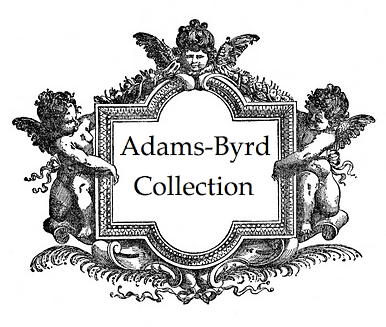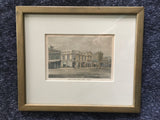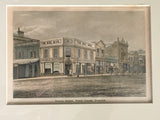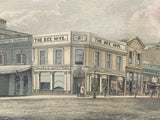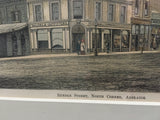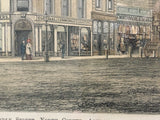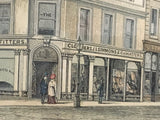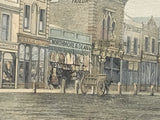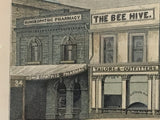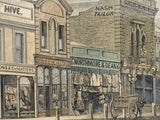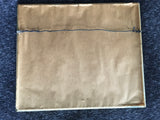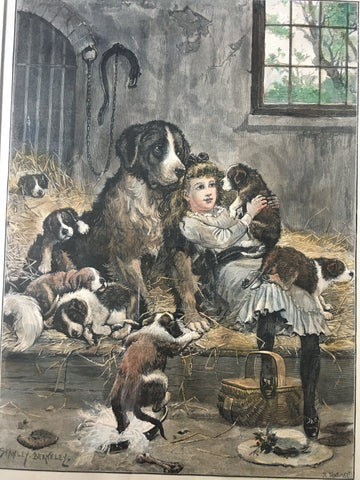Antique Print The Bee Hive Beehive Corner Adelaide South Australia “Rundle Street, North Corner”
This antique print documents the commercial life on Rundle Street in the east end of the city center of Adelaide, the capital of South Australia. It shows The Bee Hive at the northeastern corner of King William Street and Rundle Street. This famous landmark corner was already known as Beehive Corner in 1849. “Meet you at the Beehive Corner” has been a common phrase in Adelaide throughout many generations.
This 19th century streetscape print was probably done in the 1860s (& it could be as late as the 1880s).
The businesses include a pharmacy, clothing stores, tailors, hatters, etc. From left to right, this is what we are able to read on store signs, awnings, windows and walls:
HOMOEOPATHIC PHARMACY
THE BEE HIVE, TAILORS & OUTFITTERS, CLOTHIERS, (I. SIMMONS & Co) HATTERS
J.T. FICKLING HATTER [ HATTER ? in the window ]
NORTHMORE & DEAN
NASH TAILOR [ & several more building and business names in very tiny letters are beyond this sign ]
There are only three people in the scene. A man and woman (in a red hat) stand on the sidewalk by the door of The Bee Hive (& you can see the bee hive just above the doorway), and just to the right there is a man looking in one of the store’s windows. Further along to the right there is a horse drawn cart in front of Northmore & Dean.
Here is the fascinating history (excerpted from Wikipedia) of this famous corner in the City of Adelaide:
—————————————————————
”The name gained currency from "The Beehive", a draper’s shop opened by Brewer and Robertson from October 1849 then J.V.B. Ryley from 1850 to 1858, followed by Israel Simmons (ca.1831 – 9 June 1893) who ran the shop until 1886, when his business, with many others, failed. According to one reference it had a beehive motif on the glass door portrayed in gold leaf. Nearby tenants included Edmund Wright the well-known architect, William Ekins the gunsmith and James Allen's printing shop. The name is even older – archivist G. H. Pitt found the name was chosen by the original owners to denote a busy trading centre.
It had been a well-known landmark for fifty years in 1895 when what is essentially the present Beehive Buildings were built for the owner, Henry Martin to replace the antiquated structure. In the new design by George Klewitz Soward, four shops had frontages on King William Street and three facing Rundle Street, each 8 ft. (2.4 m) high, with jarrah floors and plastered walls and rear access and one shop 14 ft. (5.3 m) high, all having large plate-glass windows and nickel-plated columns. It was built three storeys above the pavement, and was Gothic in character, each gable finishing with crockets and a finial, and with open balustrades between them. At the main angle an ornamental turret was corbelled out, surmounted by a gilded beehive and bee and on the shaft of the turret the words 'Beehive Corner 1895' among foliage. The piers dividing the shopfronts were of Palmer granite. Sliding shutters were fitted to the windows facing King William Street, with a handsome iron verandah made by Fulton & Co. The sills of the windows facing Rundle Street were fitted with a small iron railing. The architects were English & Soward.
In 1950 the prime corner section of the complex was sold to confectioner C. A. Haigh for his iconic shop (Haigh’s Chocolates) after his leasing it for some 35 years.
The neo-Gothic facade and prominent tourelle were refurbished in 1998 by the firm of Harrold and Kite.”
—————————————————————
For the most complete history (available online) look up the Beehive Corner on:
adelaidia.history.SA.gov.au
Online we found a photograph of the Beehive Corner that was certainly the source / inspiration for the artist/printmaker who made this print. The photograph is in the collection of the State Library of South Australia (SLSA B 71005/23).
This interesting 19th century print of an Australian city scene is hand colored. The colors are subtle. There has probably been some fading due to age and light exposure.
It is matted and in a wood frame (gold painted finish). The frame is 12 3/8 x 10 1/2” (x 3/4” deep). The mat window is 7 x 4 3/4”.
PLEASE NOTE: Since this antique print is protected under glass, there is a lot of interference in the photos from reflections and glare. Everything in the print is actually clear and precise, so please excuse the photography problems.
The price includes shipping to U.S. customers.
All of the art work and collectibles being sold by Adams-Byrd have been collected and selected one at a time by the proprietor, an art historian with many years of training and experience in university art history departments, museums, galleries and historic sites both in the U.S. and abroad. Our small family business has been based in the Washington, D.C. area for many years. Our online presence has now replaced our brick & mortar locations. The art and collectibles that we are offering to discerning shoppers are special and unique pieces that have been carefully “curated” by us.
www.adamsbyrdcollection.com
www.adamsbyrdantiques.com (with links to the online venues where we sell)
We Also Recommend
